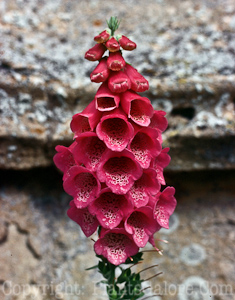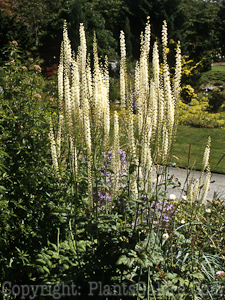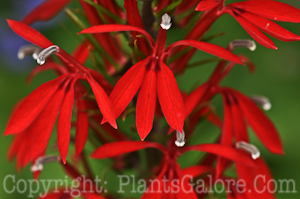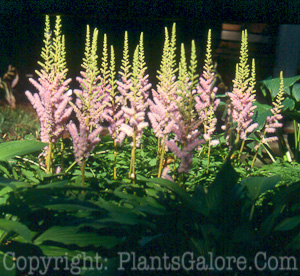Design criteria such as plant form, texture and height are important considerations for any landscape. The ideal situation is to have a nice balance of such traits so the garden does not become monotonous. Too often, perennial gardens are dominated by rounded or mounded forms and daisy-like flowers. Here are a few tall, upright perennials that will provide contrast and variation in form, texture and height to the other plants in a bed or border.
Delphinium – This majestic beauty is most associated with the magnificent gardens of England or the Pacific Northwest. They will grow in more temperate areas too but they may require a little extra care. Plant them in a site protected from the wind for best results. They emerge early in the spring, so be prepared to cover them if frost threatens. During the growing season, the very tall types such as the Pacific Giant hybrids may need staking and a shot of extra fertilizer if their leaves begin to turn yellow during the growing season. Finally, individual plants tend to be short lived and may need to be replaced after four or five years.
Foxglove – Although there are perennial foxgloves, the most commonly grown ones are biennial i.e. Digitalis purpurea. The first year from seed, they form a rosette of low growing leaves only. The second year, they flower, go to seed and die. Self-seeding keeps new plants coming for future years. Fortunately, most biennial foxglove will “bolt” meaning that they will bloom the first year from seed. Colors of perennial and biennial types of Digitalis range from dark pink to yellow. The trumpet flowers are attractive to hummingbirds too.
Bugbane – Actea racemosa (formerly Cimicifuga racemosa) is a woodland plant that bears tall, white spires of flowers in late summer. The foliage grows to about two to three feet in height and the flowers may stand up to 6 feet tall. They prefer a moist, shady location and may be grown as companions to hostas since their fine textured foliage and upright form contrast well with the generally more rounded and low growing hostas.
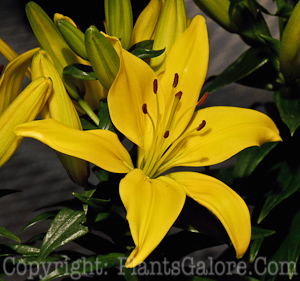 Hardy Lilies – Daylilies (Hemerocallis sp.) have grass-like foliage and survive the winter as a storage root or crown. Each flower lasts only one day. Hardy lilies (Lillium sp.) such as the Easter lily, are bulb plants. They have a single, long stem ranging from 18 inches to over 6 feet in height which bear several flowers that each last for weeks. There are many types and colors of flowers with some being extremely fragrant. Most lilies prefer sunny, well drained sites although the martagon lily will do fine in the shade.
Hardy Lilies – Daylilies (Hemerocallis sp.) have grass-like foliage and survive the winter as a storage root or crown. Each flower lasts only one day. Hardy lilies (Lillium sp.) such as the Easter lily, are bulb plants. They have a single, long stem ranging from 18 inches to over 6 feet in height which bear several flowers that each last for weeks. There are many types and colors of flowers with some being extremely fragrant. Most lilies prefer sunny, well drained sites although the martagon lily will do fine in the shade.
Cardinal Flower – Lobelia cardinalis may have either green or bronze foliage. Brilliant red flowers emerge in summer from a stem that may reach 4 or 5 feet in height. Cardinal flower enjoys sun or some shade and a rich, moist soil.
In my garden, I have trouble growing cardinal flowers. It seems that chipmunks like to climb up the plant and strip off the “skin” of the stem. Perhaps they like to lick the sweet sap since they do not appear to eat what they have pulled off.
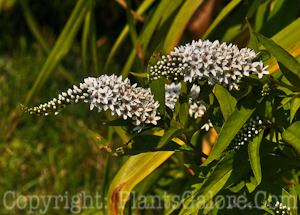 Gooseneck Loosestrife – Perhaps not as commonly grown as the other plants, Lysimachia clethroides would make a handsome addition to any garden. The white flower spikes arch gracefully from the top of 24 to 36 inch stems. It prefers full sun and a moist soil for best flowering but will do quite well in partial shade. Allow room for expansion since this plant will “move” a little by rhizomes beneath the ground but it is not overly invasive.
Gooseneck Loosestrife – Perhaps not as commonly grown as the other plants, Lysimachia clethroides would make a handsome addition to any garden. The white flower spikes arch gracefully from the top of 24 to 36 inch stems. It prefers full sun and a moist soil for best flowering but will do quite well in partial shade. Allow room for expansion since this plant will “move” a little by rhizomes beneath the ground but it is not overly invasive.
Although the name is similar, this plant is no relation to the pink flowered “loosestrife” which is clogging many lakes and wetlands. That one is in a different genus named Lythrum.
Astilbe – There are many varieties of astilbe ranging in height from 12 inches to 4 feet. Astilbe taquetti, the fall astilbe, produces a beautiful 3 to 4 foot tall lilac spike. It is good for the back of the flower bed and, like most astilbes, will do well in either sun or shade. They are also well adapted to wet sites such as next to a pond or stream.
Dwarf astilbe (Astilbe chinensis) makes a great companion for hostas.
Iris - The tall, bearded iris provide a nice upright form and beautiful flowers in early summer. Remember that they need excellent drainage and should not be planted too deep. The rhizome should be just at the surface of the soil.
Siberian iris (Iris siberica) are a good alternative for the wet site. In fact, they may be grown right in the water of a backyard pond.
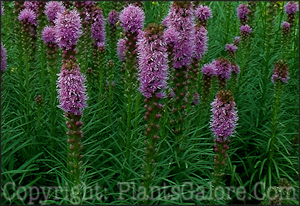 Gayfeather - The species Liatris provides several plants that display a tall, usually purple, spike during the summer. Most varieties are 3 to 4 feet tall although the cultivar ‘Kobold’ seldom exceeds 30 inches. Unlike most other spiked plants, the flowers of Liatris open from the top of the inflorescence downward.
Gayfeather - The species Liatris provides several plants that display a tall, usually purple, spike during the summer. Most varieties are 3 to 4 feet tall although the cultivar ‘Kobold’ seldom exceeds 30 inches. Unlike most other spiked plants, the flowers of Liatris open from the top of the inflorescence downward.


